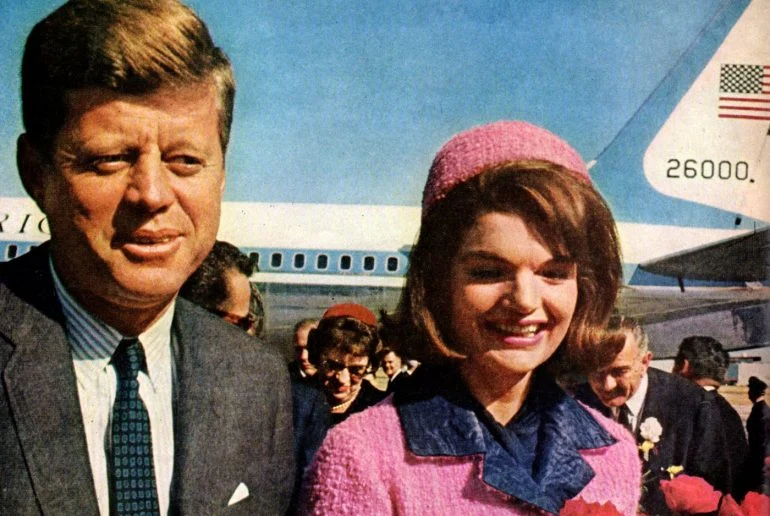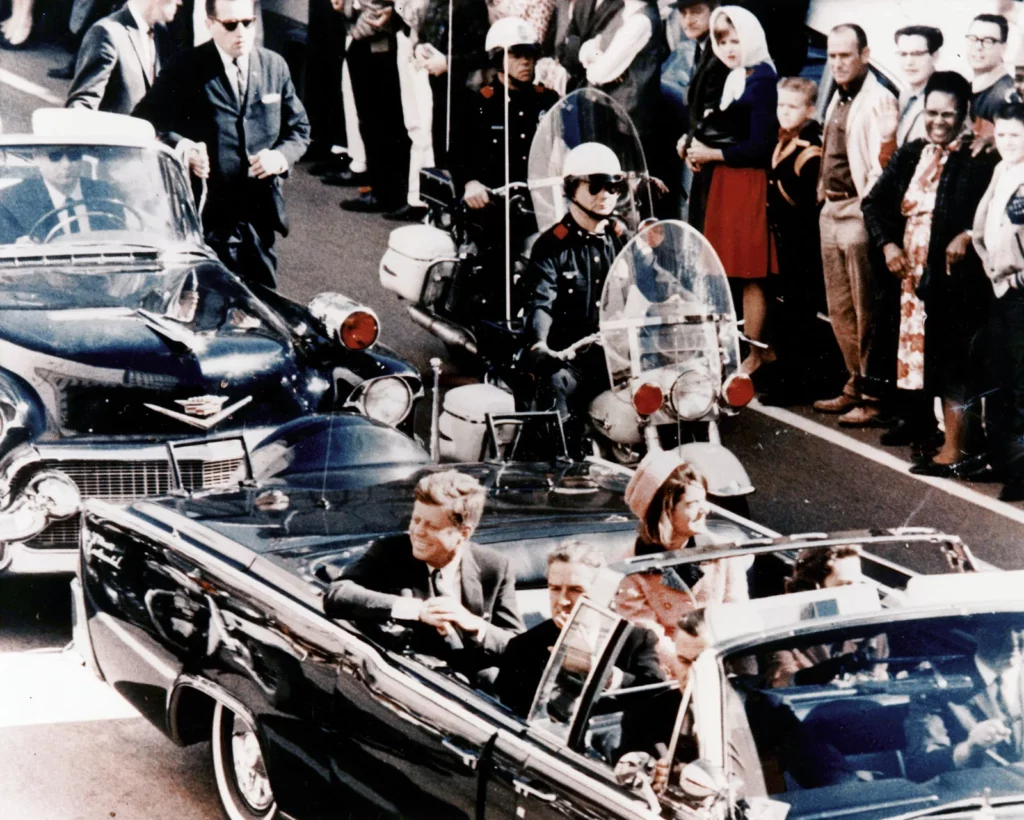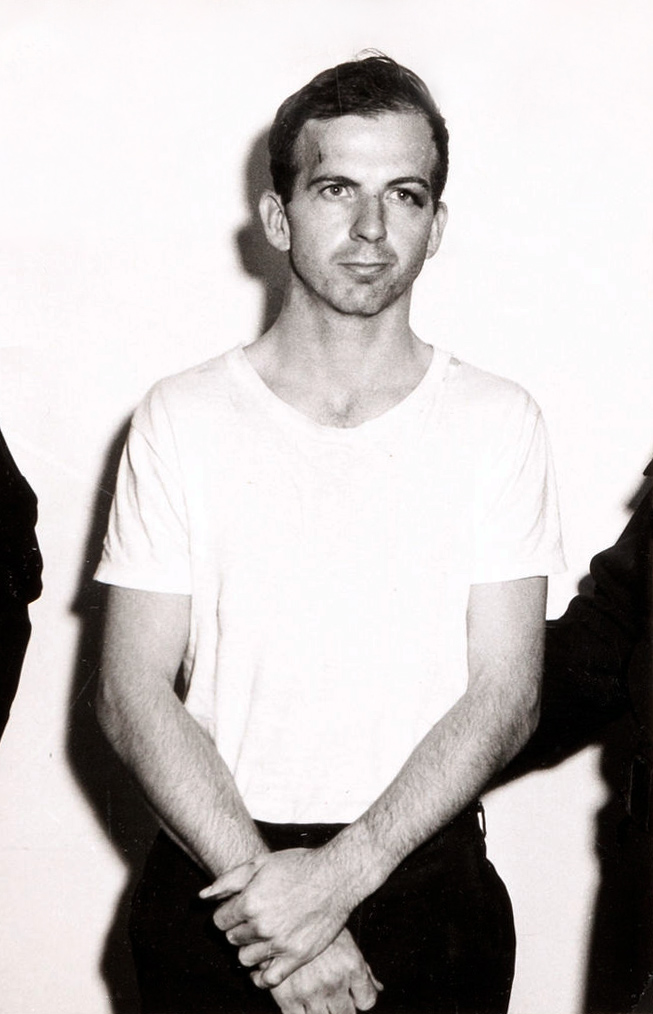The assassination of John F. Kennedy, the 35th President of the United States, is a significant event in American history that continues to captivate the public’s attention even after 60 years. On November 22, 1963, while riding in an open car during a parade in Dallas, Texas, Kennedy was assassinated, sending shockwaves throughout the world. The assassination has been the subject of many investigations, theories, and debates.
In commemoration of the 60th anniversary of the assassination, we present to you a comprehensive guide to the JFK assassination. This guide will cover all aspects of the assassination, including the day of the assassination, the investigation, the assassin Lee Harvey Oswald, and the conspiracy theories surrounding the event.
Change is the law of life. And those who look only to the past or present are certain to miss the future.
– John F. Kennedy
The Fateful Day: The Assassination of President John F. Kennedy
At the heart of downtown Dallas, Texas, the sun was out, penetrating the clear blue sky, on November 22, 1963. President John F. Kennedy, the charismatic leader of a nation, set forth on his motorcade journey through the city, unaware that these moments would be his last in the public eye.
Seated in a Lincoln Continental convertible, President Kennedy, his wife Jacqueline, and Texas Governor Connally, were waving to the massive crowds that flanked the streets. Such a display of public affection was testament to Kennedy’s popularity. But it also presented an open target to a hidden sniper.
At this very moment, the sharp sound of gunfire resonated through Dealey Plaza. Three shots were fired, echoing through the buildings and open spaces. The perfect day was suddenly marred with terror and confusion.
The first bullet made its impact, striking the president in the neck. Panic started to set in, but before any defensive action could be taken, a second shot followed. This bullet penetrated President Kennedy’s head, causing fatal damage. His abrupt slumping left those present and millions watching on television in shock and despair. The third bullet struck Governor Connally, though he would survive his injuries.
A race to Parkland Memorial Hospital ensued, but all efforts were in vain. At 1:00 PM, the 35th President of the United States was pronounced dead, leaving behind a nation in mourning and a world in disbelief.
The day is etched into the collective memory of America and world history. Here is a minute-by-minute timeline of that fateful day.
- 8:45 a.m. : President Kennedy and First Lady Jacqueline Kennedy depart from Fort Worth, Texas, for Dallas, Texas.
- 11:37 a.m. : The President and First Lady arrive at Love Field Airport in Dallas, Texas.
- 12:30 p.m. : Shots are fired at the President’s motorcade as it passes through Dealey Plaza in Dallas, Texas.
- 12:34 p.m. : Lee Harvey Oswald is seen by Dallas police officer Marion Baker in the second-floor lunchroom of the Texas School Book Depository building.
- 12:38 p.m. : Oswald is confronted by Dallas police officer J.D. Tippit in the Oak Cliff neighborhood of Dallas, Texas. Oswald fatally shot Tippit shortly after the assassination.
- 1:00 p.m. : President Kennedy is pronounced dead at Parkland Memorial Hospital in Dallas, Texas.
- 1:15 p.m. : Dallas police officer J.D. Tippit is pronounced dead at Methodist Hospital in Dallas, Texas.
- 1:50 p.m. : Lee Harvey Oswald is arrested at the Texas Theatre in the Oak Cliff neighborhood of Dallas, Texas.
- 2:38 p.m. : Vice President Lyndon B. Johnson is sworn in as the 36th President of the United States aboard Air Force One at Love Field Airport in Dallas, Texas.
- 6:00 p.m. : Lee Harvey Oswald is formally charged with the murder of President Kennedy.
- November 23, 1963: Lee Harvey Oswald is shot and killed by Jack Ruby while in police custody.
In the span of less than 24 hours, a series of seismic events had forever altered the course of American history. From the first shot that sliced through the warm Dallas air to the hushed whisper of President Kennedy’s passing, an entire nation grappled with the surreal reality of the narrative that unfolded. An ordinary man, Lee Harvey Oswald, was thrust into the spotlight. Yet, who was this man, and what propelled him down such a destructive path?
The Assassin: Lee Harvey Oswald
The story of Lee Harvey Oswald begins in the city of New Orleans. The tumultuous childhood that bred Oswald was marked by absentee parents and a stint in a juvenile detention center. Although an unsettled family situation may have contributed to his later actions, it was Oswald’s experiences after he left the United States that truly set the stage for the future.
Oswald served briefly in the Marine Corps before he defected to the Soviet Union in 1959. His disillusionment with America and attraction to Marxism undoubtedly played a role in his decision. However, despite his initial excitement, Oswald soon became disenchanted with life under Soviet rule. He sought to return to the United States, and in June 1962, Oswald, his Russian wife, and their daughter returned to American soil.
Yet, the years following his return were far from harmonious. Oswald seemed trapped in a cycle of discontent and wilderness, moving from Fort Worth to Dallas to New Orleans and then back to Dallas again. His political leanings also continued to shift in extreme directions. He attempted to assassinate far-right General Edwin Walker and formed a one-man chapter of the Fair Play for Cuba Committee, publicly advocating for Fidel Castro’s Cuba.
These actions, combined with his eventual assassination of President Kennedy, painted a clear picture: Oswald was a man driven by his beliefs, fueled by political fervor, who was not afraid to act violently when he felt it necessary.
The Weapon – The Mannlicher-Carcano Rifle
The firearm that Oswald used to carry out the assassination was a Mannlicher-Carcano rifle. Oswald purchased this 6.5mm-caliber bolt-action rifle through a mail-order in March 1963, using the alias “A. Hidell”. His proficiency with the weapon, despite its reputation for being difficult to use, likely stemmed from his time in the Marine Corps.
After the assassination, this notorious rifle was found hidden amongst boxes on the sixth floor of the Texas School Book Depository building. A partial palm print identified as Oswald’s was lifted from the barrel, further implicating him in the crime.
Arrest and Murder
The circumstances of Oswald’s arrest remain as puzzling and dramatic as the assassination itself. Mere hours after the fatal shooting of JFK, Oswald was apprehended inside the Texas Theatre by the Dallas Police for the shooting of Officer J.D. Tippit. Labeled as the most notorious suspect in history, Oswald was transported to the Dallas jail amidst an atmosphere of high tension and public outrage. Oswald was charged with the assassination of JFK on the evening of November 23rd.
While in custody, Oswald was shot and killed by Jack Ruby, a Dallas-area nightclub owner, on November 24, 1963, just two days after the assassination of Kennedy. The murder was broadcast live on national television, further complicating an already convoluted and emotionally charged investigation.
Ruby, originally named Jacob Leon Rubenstein, had somehow slipped into the basement of the Dallas Police Headquarters, possessing a .38 caliber Colt Cobra revolver. The incident raised questions about how such a security breach could occur amidst one of the most significant suspects in American history.
The assassination of JFK and the subsequent murder of Oswald have sparked numerous conspiracy theories over the years. The sudden silencing of Oswald has cast a long and impenetrable shadow of doubt and suspicion that lingers to this day.
The Trial of Jack Ruby
The trial of Jack Ruby, the man who killed Lee Harvey Oswald, was a highly publicized event that captivated the nation in the aftermath of JFK’s assassination. The trial began on March 4, 1964, nearly four months after Ruby had shot Oswald in the basement of the Dallas Police Headquarters. The act was caught in startling detail by television cameras and instantly seared into the national consciousness. The defense constructed a case around an argument of ‘psychomotor epilepsy’, an unusual condition which, they suggested, could have caused Ruby to shoot Oswald in a state of blackout without any conscious intent. However, the concept, much like many aspects of this tale, was met with skepticism.
The prosecution, on the other hand, sought to depict Ruby as a calculated killer. But in the midst of this already atmospheric trial, the atmosphere grew even more charged as the jury delved into Ruby’s background. Ruby was known for his connections to organized crime, fueling speculations about a much larger and nefarious plot behind JFK’s assassination. Moreover, Ruby’s public execution of Oswald starkly challenged the classic narrative of ‘one lone gunman.’
On March 14, 1964, Jack Ruby was found guilty of “murder with malice,” and sentenced to death. However, his conviction was overturned in October 1966 by the Texas Court of Criminal Appeals ⁸. Before a new trial could begin, Ruby fell ill and succumbed to a pulmonary embolism on January 3, 1967.
Unraveling the Conspiracy Theories: Examining Alternative Explanations
The development of conspiracy theories surrounding the assassination of JFK can be attributed to several factors. In 1979, a Congressional committee that reopened the case concluded that the original investigation had been less than complete, and raised the possibility that JFK had been killed by a conspiracy. Meanwhile, The Warren Commission’s report was criticized for its lack of transparency and completeness, which led to doubts about its conclusions. The second factor is the political climate of the time. The assassination of JFK occurred during the height of the Cold War, and the fear of Soviet infiltration and espionage was rampant. This led to speculation that the assassination was part of a larger conspiracy involving the Soviet Union. The third factor is the public’s mistrust of government institutions. The assassination of JFK occurred during a time of great social upheaval, and the public’s trust in government institutions was at an all-time low. This led to a general suspicion of the government and its motives, which made it easier for conspiracy theories to take hold.
One such theory alleges it was an inside job, masterminded by the CIA. Under this line of questioning, conspiracy theorists ask, could the American government’s own central intelligence have taken such drastic measures to halt JFK’s ‘ultra-liberal’ policies?
- The proponents of this theory cite JFK’s perceived soft approach towards communism, his disagreement with the CIA over the Bay of Pigs invasion, and his proposed plans to break down the central body into ‘a thousand pieces’ as reasons why the Agency might have wanted to remove him.
- Adding fuel to this fire is Oswald’s known ties with the intelligence community. Oswald had defected to the Soviet Union and then returned undeterred, raising suspicions about who might have been pulling his strings.
In another distinct corner of the conspiracy atlas, we find allegations of the Mafia’s involvement.
- This theory stems from Jack Ruby’s known connections to the mob. Ruby, the man who silenced Oswald forever, owned strip clubs in Dallas and had been seen with notorious mob figures. Could he have been the Mafia’s man to ensure Oswald’s silence?
- Further bolstering this theory is the fact that the Mafia allegedly played a role in JFK’s election victory – assistance that soon proved costly as the Kennedy administration began its aggressive crackdown on organized crime.
There are many more conspiracy theories behind the JFK assassination, proving there is still a public fascination and many unknowns when it comes to this historical event.
Evolving Evidence
Since the initial investigation into the JFK assassination, several pieces of evidence have been uncovered that shed new light on the case.
The Zapruder film The Zapruder film is a home movie captured by Abraham Zapruder that shows the exact moment of the assassination. The film has provided valuable insights into the sequence of events and has been crucial in analyzing the trajectory of the bullets. The film was initially kept from the public but was later released and has since become an important piece of evidence in the investigation.
Advancements in audio analysis Through careful analysis and enhancement, experts have been able to extract additional information from recordings, contributing to the overall body of evidence. One notable example is the Dictabelt recording, which captured sounds believed to be gunshots during the assassination. The recording has been analyzed extensively, and while some experts believe it supports the theory of multiple gunmen, others remain skeptical.
Advancements in physical evidence analysis One example of advancements in physical evidence analysis is the analysis of bullet fragments found at the crime scene. Through microscopic examination and ballistics testing, experts have been able to link these fragments to the type of weapon used and even trace them back to specific firearms. This has provided valuable insights into the ammunition used during the assassination.
Release of classified documents The release of classified documents has allowed researchers to delve deeper into the circumstances surrounding the assassination and explore alternative theories. These documents contain information about potential conspiracies, intelligence operations, and individuals of interest. The declassification of these files has been a significant development in the investigation and has allowed researchers to gain a better understanding of the events leading up to the assassination.
The Unanswered Questions: Lingering Mysteries of the JFK Assassination
Despite the comprehensive investigations into JFK’s assassination, myriad puzzling questions endure. The Warren Commission‘s conclusion in 1964, suggesting Oswald’s single-handed involvement, couldn’t quell the swirling speculations around the case. While various commission reports, insider leaks, verifiable facts, and countless conspiracy theories have brought us closer to the truth, some mysteries linger.
- The Magic Bullet Theory: This theory questions how a single bullet, known as ‘Commission Exhibit 399,’ could cause seven wounds on two people while maintaining its largely intact structure. The Warren Commission’s explanation, while scientifically viable, still fuels debate among critics and theorists, underscoring the need for circumstantial evidence to provide a holistic understanding of the incident.
- The Grassy Knoll: Many eyewitnesses claimed to have heard gunshots from the grassy knoll, suggesting the presence of a second shooter, an accomplice to Oswald hidden here. This theory gains considerable traction due to the unaccounted-for bullet trajectories and the Zapruder film, which appears to display JFK’s head jerking backwards, suggestive of a shot from the front.
- Oswald’s Involvement: This theory questions Oswald’s involvement in the assassination. Despite incriminating circumstantial evidence that places him in the Texas School Book Depository, Oswald denied accusations of killing the president. Is there any direct evidence unequivocally linking him to the actual shooting?
60 Years Later – Changing Perspectives
Public opinion and historical interpretation of the JFK assassination have undergone significant changes over the past 60 years. Initially, the prevailing belief was that Lee Harvey Oswald acted alone in assassinating President John F. Kennedy. This theory, known as the lone gunman theory, was supported by the findings of the Warren Commission, the official government investigation into the assassination. The Commission concluded that Oswald fired three shots from the Texas School Book Depository, with one bullet causing multiple wounds to both Kennedy and Texas Governor John Connally. This interpretation was widely accepted by the public and shaped the initial understanding of the event.
In recent years, there has been a growing trend towards a more nuanced understanding of the JFK assassination. Many researchers and historians now acknowledge that while Oswald may have been involved, there are still unanswered questions and gaps in the official narrative. The emphasis has shifted towards examining the broader context of the assassination, including Kennedy’s foreign policy decisions, his relationship with intelligence agencies, and the political climate of the time. This broader perspective has led to a more comprehensive and critical analysis of the events surrounding the assassination, challenging simplistic explanations and encouraging a deeper exploration of the complexities involved.
Resources and Interesting Reads
Here are some resources and interesting reads about the JFK assassination:
- 23 JFK Assassination Facts You’ve Never Heard Before: This article lists 23 rock-solid JFK assassination facts that are more fascinating than any conspiracy theory ever could be.
- Five Interesting Reads About the JFK Assassination: This blog post lists five books about the assassination that make for fascinating reads.
- Who Killed JFK? Alec Baldwin and Rob Reiner Have Been Asking That Question for Decades: The article provides an in-depth look at the event, including the speeches delivered by Alec Baldwin and Rob Reiner, and the new details they revealed about the assassination. The article also delves into the ongoing debate surrounding the assassination and the various conspiracy theories that have emerged over the years. It’s an interesting read for anyone interested in the JFK assassination and its impact on American history.
- The Sixth Floor Museum at Dealey Plaza: The museum examines the life, times, death, and legacy of President John F. Kennedy within the context of American history. The museum’s permanent exhibit, “John F. Kennedy and the Memory of a Nation,” uses historic films, photographs, artifacts, and interpretive displays to document the events of November 22, 1963, and the aftermath of the assassination. The museum also offers many resources, including a very detailed timeline, on its website.





